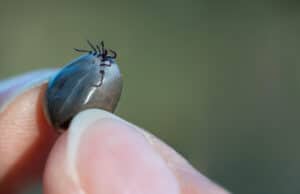Some of the ticks in Colorado aren’t a threat to humans, but ticks that carry diseases in any part of the ecosystem are still important. How they affect wildlife, domesticated animals, and farm animals has a huge impact on the daily lives of human beings.
Ticks are present throughout Colorado but are most common at higher elevations. They’re able to transmit diseases because most take various hosts during their lifetime.
In general, nymph ticks parasitize smaller hosts before moving on to bigger hosts as adults. This allows diseases that are rampant in reservoir populations like rats to infect humans. That’s why it’s important to know how to recognize some of the most common ticks you may encounter before you find them on your animal or body.
What are some of the ticks you’ll find in Colorado? Let’s take a look at 10 now.
10 Ticks in Colorado
Here are 10 of the ticks in Colorado:
- Rocky Mountain Wood Tick
- Winter Tick
- Otobius Lagophilus
- Ornithodoros hermsi
- American Dog Tick
- Rabbit Tick
- Lone Star Tick
- Groundhog Tick
- Ixodes kingi
- Ixodes sculptus
1. Rocky Mountain Wood Tick
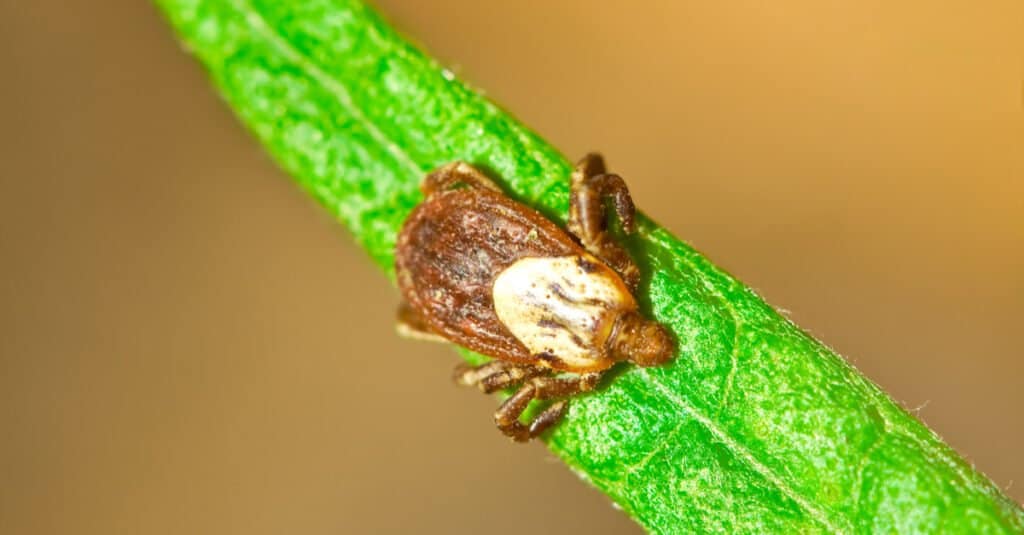
Rocky Mountain wood ticks bite humans the most in Colorado.
©South12th Photography/Shutterstock.com
If you are bitten by a tick in Colorado, the Rocky Mountain wood tick is the most likely culprit. These ticks live for 2-3 years, and they easily survive cold winters. They like tall vegetation so they can come into contact with a wandering host.
Specifically, Rocky Mountain wood ticks like shrubs, rocky outcrops, ponderosa pines, and lightly forested mountains. Ticks are concentrated in these areas, and they also need to be in these habitats to survive when they detach from their host. These ticks feed on any mammal, including ground squirrels, jackrabbits, cattle, goats, dogs, horses, chipmunks, rats, mice, marmots, wood rats, mules, elk, and porcupines. They readily feed on people too.
Rocky Mountain wood ticks carry a bacterial pathogen that causes anaplasmosis in cattle. Cows that are infected lose weight, experience anemia, become anorexic, and show intolerance for exercise. Death is the most severe consequence of an infection.
While humans don’t need to worry about the disease in cattle, the Rocky Mountain wood tick is also a vector for Rocky Mountain spotted fever and tularemia.
2. Winter Tick
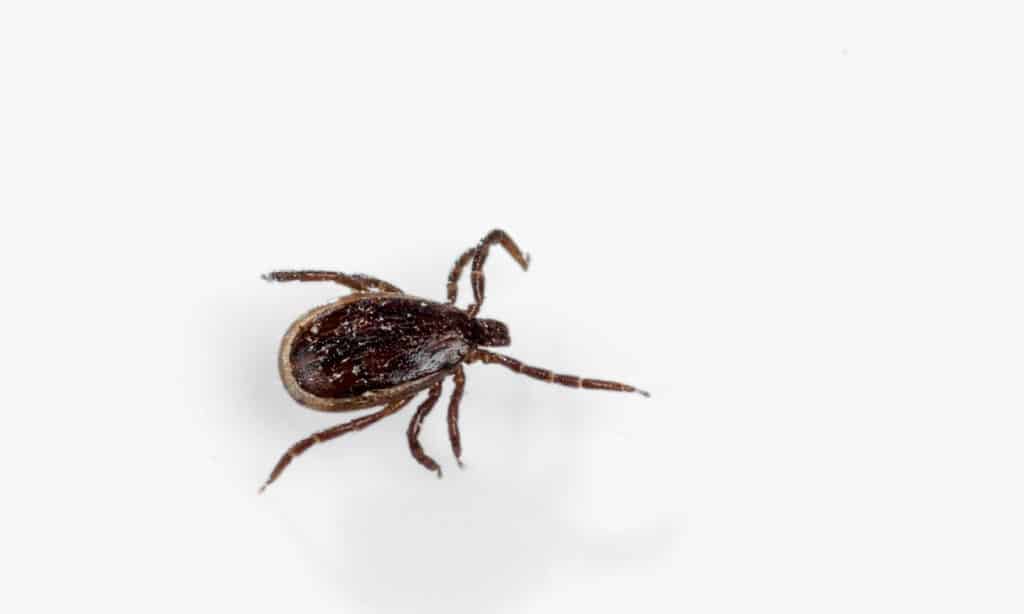
After feeding, winter ticks are a half-inch in size.
©iStock.com/VladK213
This tick likes to chow down on domesticated animals with a real taste for horses. It also goes for large wild animals like elk and deer, and it rarely bites humans.
Winter ticks have brown bodies with a splattering of tan. They’re one of the larger ticks on our list when they’re engorged with blood. After feeding, they can be half an inch in size. As their name implies, they’re most active in the winter.
These ticks are different than most because they only take one host in their lifetime. As a result, they don’t cause much concern regarding disease transmission.
3. Otobius Lagophilus

Otobius Lagophilus only feeds as a nymph.
©schankz/Shutterstock.com
Otobius Lagophilus is found mostly on jackrabbits and cottontail rabbits. It’s a known vector of Colorado tick fever, tularemia, and Rocky Mountain spotted fever. It’s a hearty tick that will remain infected with tularemia for more than 600 days.
These are soft ticks and this particular tick only feeds as a nymph, which is the stage before adulthood. They get enough blood as nymphs to live the rest of their lives.
4. Ornithodoros hermsi
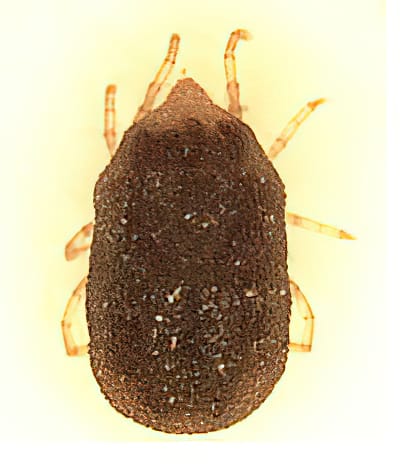
Rodent nests are perfect for Ornithodoros hermsi.
These ticks prefer rodents. They particularly enjoy rock squirrels and western chipmunks. They like to make a home in their nests so they have close access to their hosts.
What makes these ticks especially dangerous is that most people don’t realize they’ve been bitten because it’s painless. Wild ticks live about a year and a half, but those in a laboratory live over six years. They don’t need to feed for four years.
5. American Dog Tick

American dog ticks come to Colorado on animals that have traveled out of state.
©Doug Lemke/Shutterstock.com
The American dog tick parasitizes rodents, raccoons, dogs, and occasionally humans. It’s rare in Colorado, but it’s found enough on dogs that have gone out of state that it deserves a place on our list.
They’re dark brown with some tan markings on their backs, and they’re the primary vectors of Rocky Mountain spotted fever. This makes them especially problematic.
6. Rabbit Tick
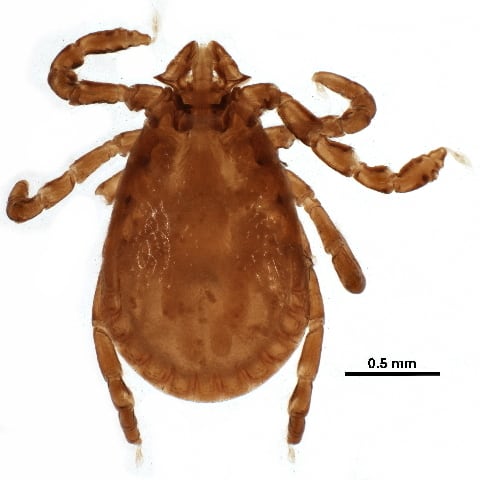
Rabbit ticks rarely bite humans.
©CBG Photography Group, Centre for Biodiversity Genomics / Creative Commons – License
As the name implies, rabbit ticks prefer jackrabbits and cottontail rabbits. They are vectors for Rocky Mountain spotted fever and tularemia, though they rarely bite humans. They aren’t one of the ticks that you should worry about when in Colorado.
These ticks are the size of a sesame seed, which makes them especially hard to spot. They can survive two years without eating.
7. Lone Star Tick

Lone star ticks are rare in Colorado and are only found in the southeast.
©iStock.com/epantha
Unlike in other states, lone star ticks are rare in Colorado, with a small range in the southeast. They’re not picky about what they’ll parasitize, so they’re found on all kinds of wild animals, dogs, and people.
These ticks especially like persimmon, winged elm, and sassafras trees. They’re rarely found in open prairies. Nymphs are found in the forests of these trees if there is no brush. Adults are more prevalent in areas with brush and other ground vegetation.
8. Groundhog Tick
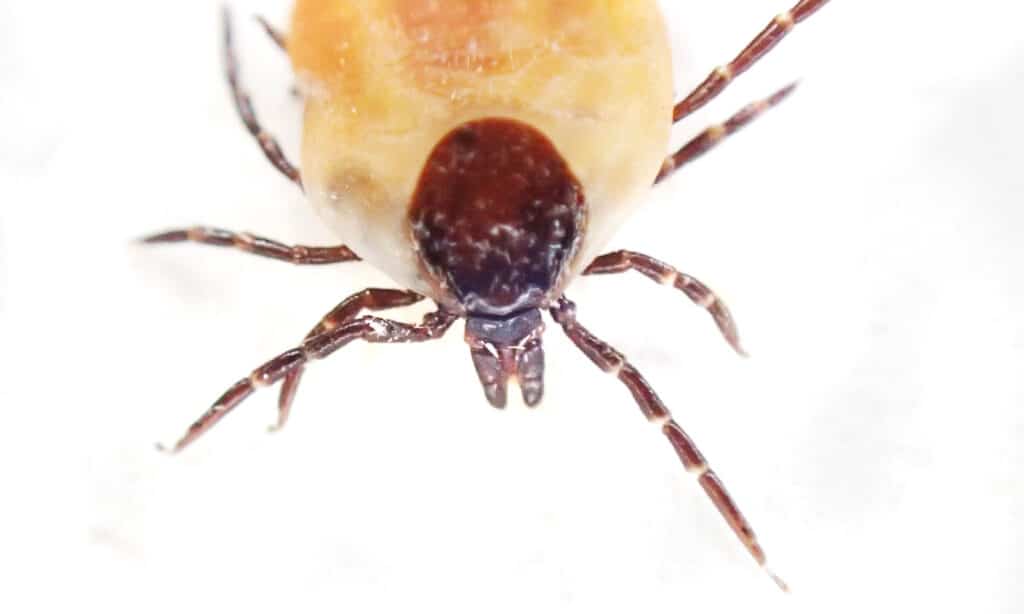
Groundhog ticks are also called woodchuck ticks.
©iStock.com/jonnysek
Groundhog ticks will feed on people if the opportunity presents itself. They’re also known as woodchuck ticks, though they prefer groundhogs. Also, they can go up to a year without feeding. These ticks are a reddish-brown color, but females are often tanner.
9. Ixodes kingi

Ixodes kingi transmits tularemia and Colorado tick fever.
©iStock.com/TacioPhilip
Ixodes kingi likes ground squirrels, mice, and prairie dogs. It also likes northern grasshopper mice. There are recorded cases of this tick attaching to dogs, cats, and humans. Ixodes kingi is a known vector for tularemia and the Colorado tick fever virus.
10. Ixodes sculptus

Ixodes sculptus has no problem attaching to any predator that eats its host.
©iStock.com/CarolinaSmith
Burrowing rodents are this tick’s go-to prey. It especially likes ground squirrels and has no problem attaching to a predator that snatches up its host. It’ll go for dogs, cats, and goats if it has the chance. This tick is a known harbinger of Colorado tick fever and tularemia.
The photo featured at the top of this post is © iStock.com/epantha
Thank you for reading! Have some feedback for us? Contact the AZ Animals editorial team.





